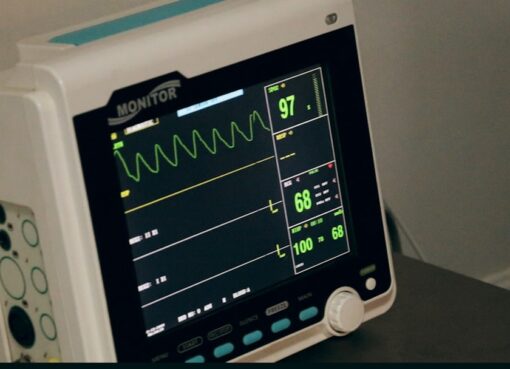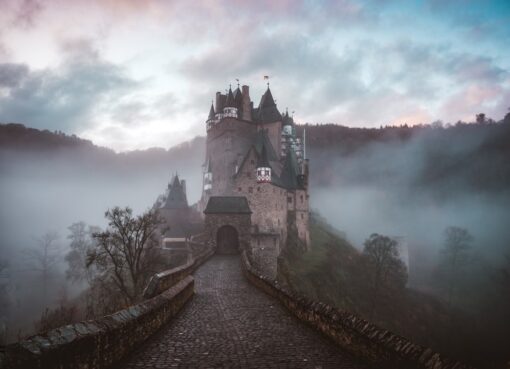Creating a Thriving Aquatic Ecosystem in a 3 Gallon Fish Tank

When it comes to choosing the right fish and plants for a 3-gallon fish tank, it’s important to consider the size of the tank and the specific needs of the aquatic life you plan to keep. For fish, it’s best to opt for small species that are well-suited to small tanks, such as bettas, guppies, or tetras. These fish are able to thrive in smaller environments and won’t outgrow the tank. It’s important to avoid overcrowding the tank, so it’s best to stick to just one or two small fish in a 3-gallon tank.
When it comes to aquatic plants, there are several options that are well-suited to a small tank. Some popular choices include java moss, anubias, and java fern. These plants are relatively low-maintenance and can thrive in a smaller environment. It’s important to consider the lighting and substrate needs of the plants you choose, as well as their compatibility with the fish you plan to keep. By carefully selecting the right fish and plants for your 3-gallon tank, you can create a balanced and thriving aquatic ecosystem.
In addition, it’s important to consider the compatibility of the fish and plants you choose. Some fish may be more aggressive and may not be suitable for a small tank with delicate plants. It’s important to research the specific needs and behaviors of the fish and plants you plan to keep in order to ensure a harmonious and healthy ecosystem. By choosing the right fish and plants for your 3-gallon tank, you can create a beautiful and balanced aquatic environment that will thrive for years to come.
Key Takeaways
- Choose small, low-maintenance fish such as bettas or guppies and hardy, small aquatic plants like java fern or anubias for a 3 gallon fish tank.
- Use a small, efficient filter and perform regular water changes to maintain water quality and a healthy ecosystem in a small tank.
- Provide adequate lighting for aquatic plants with a low to medium light requirement, using LED lights for energy efficiency and plant growth.
- Use a fine substrate like sand or gravel and add natural decorations like driftwood or rocks to create a balanced and natural environment for fish and plants.
- Regularly test water parameters such as ammonia, nitrite, and nitrate levels, and adjust as needed to ensure a stable and healthy aquatic environment in a small tank.
- Feed fish small amounts of high-quality food and trim and prune aquatic plants as needed to maintain a healthy and thriving ecosystem in a 3 gallon fish tank.
- Consider using a small algae scraper and performing regular maintenance to keep the tank clean and healthy, and avoid overstocking the tank to maintain a balanced ecosystem.
Proper Water Filtration and Maintenance for a Healthy Ecosystem
Proper water filtration and maintenance are essential for maintaining a healthy ecosystem in a 3-gallon fish tank. In such a small environment, it’s important to invest in a high-quality filter that is specifically designed for small tanks. Look for a filter that provides both mechanical and biological filtration, as well as aeration to ensure that the water remains clean and oxygenated. Regular water changes are also crucial for maintaining water quality in a small tank. It’s recommended to perform weekly water changes of around 20-30% of the tank volume to remove waste and replenish essential nutrients.
In addition to regular water changes, it’s important to monitor water parameters such as pH, ammonia, nitrite, and nitrate levels. Test kits are readily available and can help you keep track of these important parameters. If any levels are found to be out of balance, it’s important to take corrective action immediately to prevent harm to the fish and plants in the tank. By staying on top of water filtration and maintenance, you can ensure that your 3-gallon tank remains a healthy and thriving ecosystem for its inhabitants.
It’s also important to keep an eye on the condition of the filter media and replace it as needed. Over time, filter media can become clogged with debris and lose its effectiveness. By regularly cleaning or replacing the filter media, you can ensure that your filter continues to operate at peak efficiency. Proper water filtration and maintenance are essential for creating a healthy and balanced ecosystem in a 3-gallon fish tank, so it’s important to stay diligent in these efforts.
Setting Up the Ideal Lighting for Aquatic Plants
Setting up the ideal lighting for aquatic plants in a 3-gallon fish tank is crucial for their growth and overall health. When choosing lighting for your tank, it’s important to consider the specific needs of the plants you plan to keep. Different types of plants have different lighting requirements, so it’s important to research the specific needs of the plants you plan to keep. In general, most aquatic plants require moderate to high lighting levels in order to thrive.
LED lighting is often recommended for small tanks, as it provides bright, energy-efficient light that is well-suited to aquatic plant growth. Look for a light fixture that is specifically designed for planted aquariums, as these fixtures often provide customizable settings for intensity and duration. It’s important to provide a consistent lighting schedule for your plants, typically around 8-10 hours per day. This will mimic natural daylight cycles and promote healthy plant growth.
In addition to providing the right intensity and duration of light, it’s important to consider the color spectrum of the light. Most aquatic plants benefit from a full spectrum light that includes both blue and red wavelengths. This will promote healthy photosynthesis and overall plant growth. By setting up the ideal lighting for your aquatic plants, you can create an environment that supports their growth and enhances the overall beauty of your 3-gallon fish tank.
Balancing the Ecosystem with the Right Substrate and Decorations
| Substrate Type | Benefits |
|---|---|
| Gravel | Provides a stable base for plants and allows for good water circulation |
| Sand | Creates a natural look and is suitable for bottom-dwelling fish |
| Aquarium Soil | Rich in nutrients and promotes healthy plant growth |
| Decorations | Provide hiding spots for fish and create a visually appealing environment |
Balancing the ecosystem in a 3-gallon fish tank involves choosing the right substrate and decorations that will support both the fish and plants in the tank. When it comes to substrate, it’s important to choose a material that is well-suited to the specific needs of your plants. Many aquatic plants benefit from a nutrient-rich substrate such as aqua soil or sand that provides essential nutrients for healthy growth. It’s also important to consider the aesthetic appeal of the substrate, as it will serve as the foundation for the overall look of your tank.
In addition to substrate, decorations play an important role in balancing the ecosystem of a 3-gallon fish tank. Decorations such as driftwood, rocks, and caves can provide hiding places for fish and create visual interest in the tank. It’s important to choose decorations that are safe for both the fish and plants in the tank, as well as easy to clean and maintain. By carefully selecting substrate and decorations that support the needs of your aquatic life, you can create a balanced and visually appealing ecosystem in your small tank.
It’s also important to consider the placement of decorations in the tank in order to create a natural-looking environment. By arranging decorations strategically, you can create hiding places for fish, provide anchor points for plants, and create visual depth in the tank. Balancing the ecosystem with the right substrate and decorations is an important aspect of creating a healthy and visually appealing 3-gallon fish tank.
Monitoring Water Parameters and Adjusting as Needed
Monitoring water parameters is crucial for maintaining a healthy ecosystem in a 3-gallon fish tank. It’s important to regularly test water parameters such as pH, ammonia, nitrite, and nitrate levels in order to ensure that they remain within safe ranges for your fish and plants. Test kits are readily available at pet stores and online retailers, making it easy to stay on top of water quality in your tank.
If any water parameters are found to be out of balance, it’s important to take corrective action immediately. For example, if ammonia or nitrite levels are elevated, performing a water change can help dilute these harmful substances. If nitrate levels are high, adding live plants or performing more frequent water changes can help reduce them. By staying diligent in monitoring water parameters and taking corrective action as needed, you can ensure that your 3-gallon tank remains a healthy environment for its inhabitants.
In addition to regular testing, it’s important to observe the behavior of your fish and the condition of your plants in order to gauge the overall health of your ecosystem. Signs of stress or illness in fish or poor growth in plants can indicate underlying issues with water quality. By staying vigilant and proactive in monitoring water parameters and making adjustments as needed, you can maintain a healthy and thriving ecosystem in your 3-gallon fish tank.
Feeding and Caring for Fish and Plants in a Small Tank

Feeding and caring for fish and plants in a small 3-gallon tank requires attention to detail in order to maintain a healthy ecosystem. When it comes to feeding fish, it’s important to provide a balanced diet that meets their nutritional needs without overfeeding. Overfeeding can lead to poor water quality and health issues for fish, so it’s important to feed them sparingly and remove any uneaten food from the tank.
In addition to feeding fish, it’s important to provide care for any aquatic plants in your tank. This may include trimming dead or decaying leaves, removing algae growth, and providing any necessary fertilization or supplementation. It’s also important to consider the specific needs of your plants when it comes to lighting, substrate, and water parameters in order to ensure their overall health and growth.
It’s also important to consider any specific care requirements for the species of fish you choose for your 3-gallon tank. Some species may have specific dietary needs or behavioral traits that require special attention. By researching the specific needs of your fish and plants and providing them with proper care, you can maintain a healthy and balanced ecosystem in your small tank.
Tips for Maintaining a Thriving Aquatic Ecosystem in a 3 Gallon Fish Tank
Maintaining a thriving aquatic ecosystem in a 3-gallon fish tank requires attention to detail and regular maintenance. Here are some additional tips for keeping your small tank healthy:
– Avoid overstocking: It’s important not to overcrowd your 3-gallon tank with too many fish or too much plant life. Overstocking can lead to poor water quality and stress on the inhabitants of the tank.
– Keep up with regular maintenance: Regular water changes, filter cleaning, and testing of water parameters are essential for maintaining a healthy ecosystem.
– Provide proper nutrition: Ensure that your fish are receiving a balanced diet that meets their nutritional needs without overfeeding.
– Choose compatible species: When selecting fish for your small tank, it’s important to choose species that are compatible with each other and with any aquatic plants you plan to keep.
– Monitor behavior: Keep an eye on the behavior of your fish and any signs of stress or illness in order to address any issues promptly.
– Research specific needs: Take the time to research the specific needs of any fish or plants you plan to keep in order to provide them with proper care.
By following these tips and staying diligent in maintaining your 3-gallon fish tank, you can create a thriving aquatic ecosystem that will bring joy and beauty into your home.
If you’re considering setting up a 3 gallon fish tank, you may want to check out this article on choosing the right filter for a small aquarium. Proper filtration is essential for maintaining a healthy environment for your fish, and this article provides valuable information on selecting the best filter for a small tank like a 3 gallon. It’s important to ensure that your fish have clean and well-oxygenated water, and the right filter can make all the difference.
FAQs
What are the dimensions of a 3 gallon fish tank?
The dimensions of a standard 3 gallon fish tank are typically around 10 inches in length, 7 inches in width, and 9 inches in height.
What types of fish are suitable for a 3 gallon fish tank?
Due to the limited space, it is recommended to keep small fish such as bettas, guppies, or small species of tetras in a 3 gallon fish tank. It is important to research the specific needs and compatibility of the fish before adding them to the tank.
What equipment is needed for a 3 gallon fish tank?
Basic equipment needed for a 3 gallon fish tank includes a filter, heater (if keeping tropical fish), thermometer, and a small air pump. It is also important to have a suitable substrate, decorations, and a water testing kit.
How often should water be changed in a 3 gallon fish tank?
It is recommended to change 20-30% of the water in a 3 gallon fish tank every 1-2 weeks. Regular water changes help maintain water quality and keep the fish healthy.
Can live plants be added to a 3 gallon fish tank?
Yes, live plants can be added to a 3 gallon fish tank. They can help improve water quality, provide oxygen, and create a natural environment for the fish. It is important to choose plants that are suitable for the tank size and lighting conditions.
Leave a Reply
You must be logged in to post a comment.



Leave a Comment